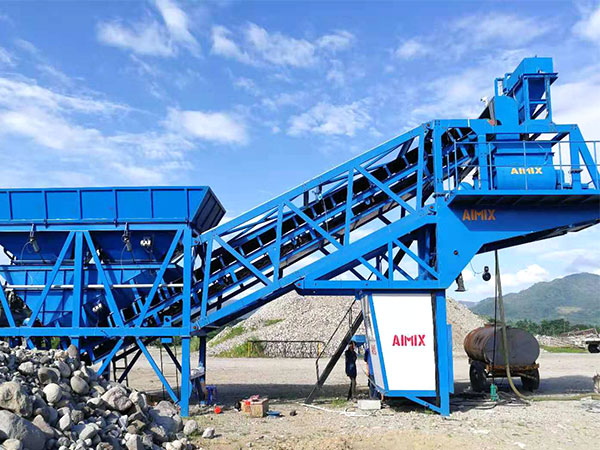Mobile mixing plants have become an essential asset in the construction industry, offering the flexibility to produce high-quality concrete at various job sites. Whether for large-scale infrastructure projects or smaller construction tasks, understanding the space requirements for installing a mobile mixing plant is crucial to ensure efficient and seamless operations. In this article, we will discuss the factors that influence the space needed for a mobile mixing plant and how to optimize your setup.
Key Factors Affecting Space Requirements
Plant Size and Capacity: The size and production capacity of the mobile mixing plant are critical factors influencing the space required. Mobile mixing plants come in a range of sizes and capacities, and larger plants will naturally demand more space. The capacity of mobile plants can vary from 20 to 100 cubic meters per hour or even more.
Configuration and Design: Mobile mixing plants can have different configurations, including single or double-shaft mixers and various aggregate storage options. The specific design and layout of the plant will impact the space requirements. Some plants are designed for compact setups, while others may require more space due to additional features and equipment.
Accessibility and Mobility: Mobile batching plants are designed for easy transportation and setup. Their mobility is a significant advantage, allowing them to be positioned in different locations as needed. However, the accessibility and layout of the site can influence the space required to accommodate the plant and its components.
Material Storage: Mobile mixing plants typically have built-in silos or storage compartments for aggregates, cement, and other materials. The capacity of these storage areas will affect the plant’s overall footprint. The type of storage, whether in separate compartments or integrated silos, can also impact the layout.
Mixing and Batching Equipment: The layout and size of the mixing and batching equipment, including the mixer, control panels, and conveyor systems, are key space considerations. Some plants may have more compact arrangements, while others require a larger area for equipment installation.
Optimizing Space for a Mobile Mixing Plant
Clear and Level Ground: Ensuring that the installation site is clear and level is essential. The ground should be free of debris, vegetation, and obstructions. A level surface helps with plant stability and facilitates the setup process.
Adequate Space for Material Delivery: Consider the space required for the delivery of raw materials, including aggregates, cement, and additives. Adequate space for material storage, as well as the loading and unloading of materials, should be allocated.
Safety Zones: Establish safety zones around the mobile mixing plant. These areas should be clear of personnel and equipment to prevent accidents and ensure a safe working environment.
Storage and Workspace: In addition to the space required for the plant itself, allocate space for storage of spare parts, tools, and maintenance equipment. Adequate workspace for plant operators and maintenance personnel is also important.
Consider Local Regulations: Be aware of local regulations and permits that may dictate specific space requirements for mobile mixing plant installations. Complying with these regulations is essential to avoid legal issues and fines.
Efficient Layout: Optimize the layout of the mobile mixing plant to make the best use of the available space. Efficient placement of equipment, storage compartments, and conveyors can help minimize the overall footprint of the plant.
Site Accessibility: Ensure that the installation site is accessible for the delivery and setup of the mobile mixing plant. Adequate access for transport vehicles and clear paths for moving components are critical.
Conclusion
The space requirements for installing a mobile mixing plant can vary depending on factors such as plant size, capacity, design, and the layout of the installation site. By considering these factors and optimizing the setup, construction companies can make the most efficient use of available space while ensuring the seamless operation of the mobile mixing plant. Adequate space planning not only enhances efficiency but also contributes to the safety and productivity of concrete production at construction sites.


Comments
No comments yet. Be the first to react!